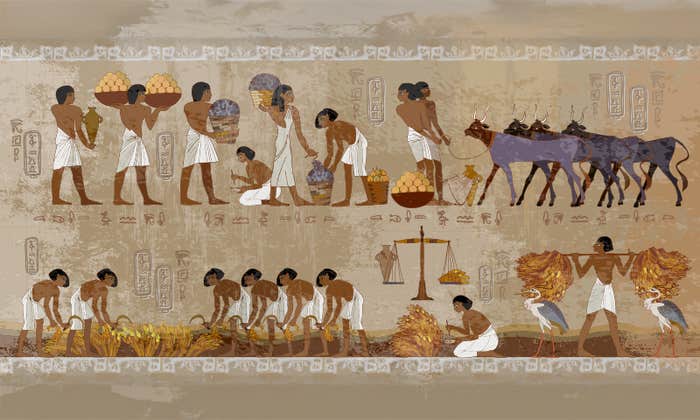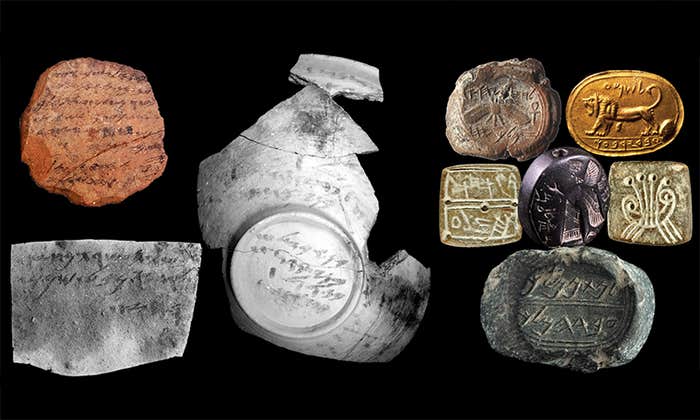Robert Boyle, a founding member of the Royal Society, was part of an “invisible college” of natural philosophers and physicians who lived by the motto: “nullius in verba,” or, “nobody’s word for it.” This gang of 17th century intellectual rebels questioned the dominant views of the time and stuck by the principle that truth could only be determined through experimenting with the natural world.
Today, many regard Boyle as the father of chemistry and the inventor of the modern experimental method. He was unafraid to explore the natural obscurities of his time or to drum up excitement about what the future might hold.
To that end, Boyle drafted up a 24-item pie-in-the-sky wish list in the 1660s, of what he hoped humankind would achieve in the future. Hoping to broaden the boundaries of possibility, he promised celebrity for anyone who accomplished “approximations” of his listed predictions.
Out of a total of 24 items, which he described only in short phrases, here are eight of the most interesting—and where we stand with them today.
1. Prolongation of Life
The shortness of life may have saddened Boyle. During his time, the average person lived into her mid-thirties. But, due to advances in medicine, including Alexander Flemming’s 1928 discovery of penicillin, the UK government has predicted that one third of babies born in 2013 will live past the round age of 100. This certainly qualifies as a “prolongation” but, being an alchemist, it’s likely that Boyle desired the ultimate solution: the elixir of life. That may be realized still, in the form of a genetically engineered solution to the cause of aging.
2. The Practicable and certain way of finding longitudes
After the Scilly naval disaster of 1707, where the Royal Navy lost four ships to failed navigation, the British Parliament passed the 1714 Longitude Act and offered a reward of 22,000 pounds (around $2.8 million today) for anyone who could find a precise method for determining longitude. At the time, measuring longitude depended on knowing the time of a fixed reference point, like another city. But the wooden, pendulum clocks of the time were ineffective at sea. John Harrison, a British clockmaker, soon solved the problem by devising the pocket watch. Over a voyage of 47 days, the watch’s error was computed to be only 39.2 seconds, three times smaller than the amount Parliament required.
3. Attaining “gigantick” dimensions
It’s possible that Boyle was thinking about architecture when he penned this ambiguous item, because Christopher Wren was building St. Paul’s Cathedral at the time. Perhaps he wished to build something like the Egyptian Pyramids. Or maybe he wanted giant foods that could feed many.
Whichever way, we’ve got him covered. In 2017, architect Adrian Smith plans to raise The Kingdom Tower, a skyscraper that will tower a full kilometer into the sky. This July, geneticists published a paper suggesting that manipulating the gene signaling pathway for the uppermost part of a stem would allow them to grow fruits of “extreme size.”1 And we’ve snapped a picture of the Earth from 3.7 billion miles away.
4. Malleable Glass
Some items on Boyle’s list had, to his mind, existed in the past before being lost to antiquity. Pliny’s History of the World describes an encounter with malleable glass long before Boyle’s time. “These guys were envisioning the ancient lost worlds,” said Vera Keller, an assistant professor of history at the University of Oregon. According to Pliny, an artist presented the Roman Emperor Tiberius with a cup of glass that wouldn’t break when thrown on the ground. When Tiberius asked the artist if anyone else knew of this invention and the artist said no, Tiberius killed him—and so began the myth of the lost malleable glass. Today, we may not have unbreakable glass cups, but we do have tempered glass that is almost unbreakable by hand.
5. Varnishes perfumable by rubbing
Perhaps the most curious item on Boyle’s wish list is the desire for scratch and sniff. Even Keller is still unsure why Boyle desired this novelty item. Today scratch and sniff is common. It was made accidentally by researchers looking to make carbonless copy paper with microencapsulation technology, which traps ink, or scent chemicals, within tiny capsules of gelatin or plastic spheres that burst under applied pressure.
6. Perpetual Light
There are several stories from the Renaissance about explorers who found perpetual burning lamps that snuffed out just as they opened the doors of old tombs. Ancient myths that were just out of reach appealed to Boyle. “[He was] living in a very disrupted time, desiring objects that represent the durability of [ancient] empires,” says Keller.
Thomas Edison summoned something like perpetual light in 1879, when he invented the electric bulb, which produces light when heat allows electric current to pass through a wire filament. Combining it with a near-perpetual power source like a nuclear plant would surely have satisfied this point.
7. Transmutation of Metal and a Universal Solvent
Melinda Baldwin, a lecturer in the history of science at Harvard University, thinks that Boyle would have most wanted to see this item of his list, because it was most critical to the practice of alchemy. Today, with the dawn of the atomic age, nuclear physicists transform elements to other elements in nuclear reactors and by crashing them together in particle colliders. Gold can be made from other atoms, including lead—but it isn’t as practical a process as Boyle might have wished.
8. The cure of disease at a distance or at least by transplantation
Alchemists were concerned with trying to identify immaterial forces. With this list item, Boyle was most likely looking for a noninvasive way to heal the human body. Science has, in some ways, found a way to do this. Radiation treatment can cure cancer. Lasers are used to restore vision, and doctors can now replace a whole hip with minimally invasive surgery that requires a small incision. We also seem to be able to make wounds heal faster by reducing stress. Transplantation, of course, isn’t a problem. Today, more than 5,000 heart transplants take place around the world.
Boyle would be proud.
* Correction: The article originally said Christopher Wren was building St. Patrick’s Cathedral during Boyle’s lifetime. It was, in fact, St. Paul’s.
JoAnna Klein is a former editorial intern at Nautilus.
Reference
1. Lippman, Z.B. et al. A cascade of arabinosyltransferases controls shoot meristem size in tomato. Nature Genetics 47, 784–792 (2015).


























